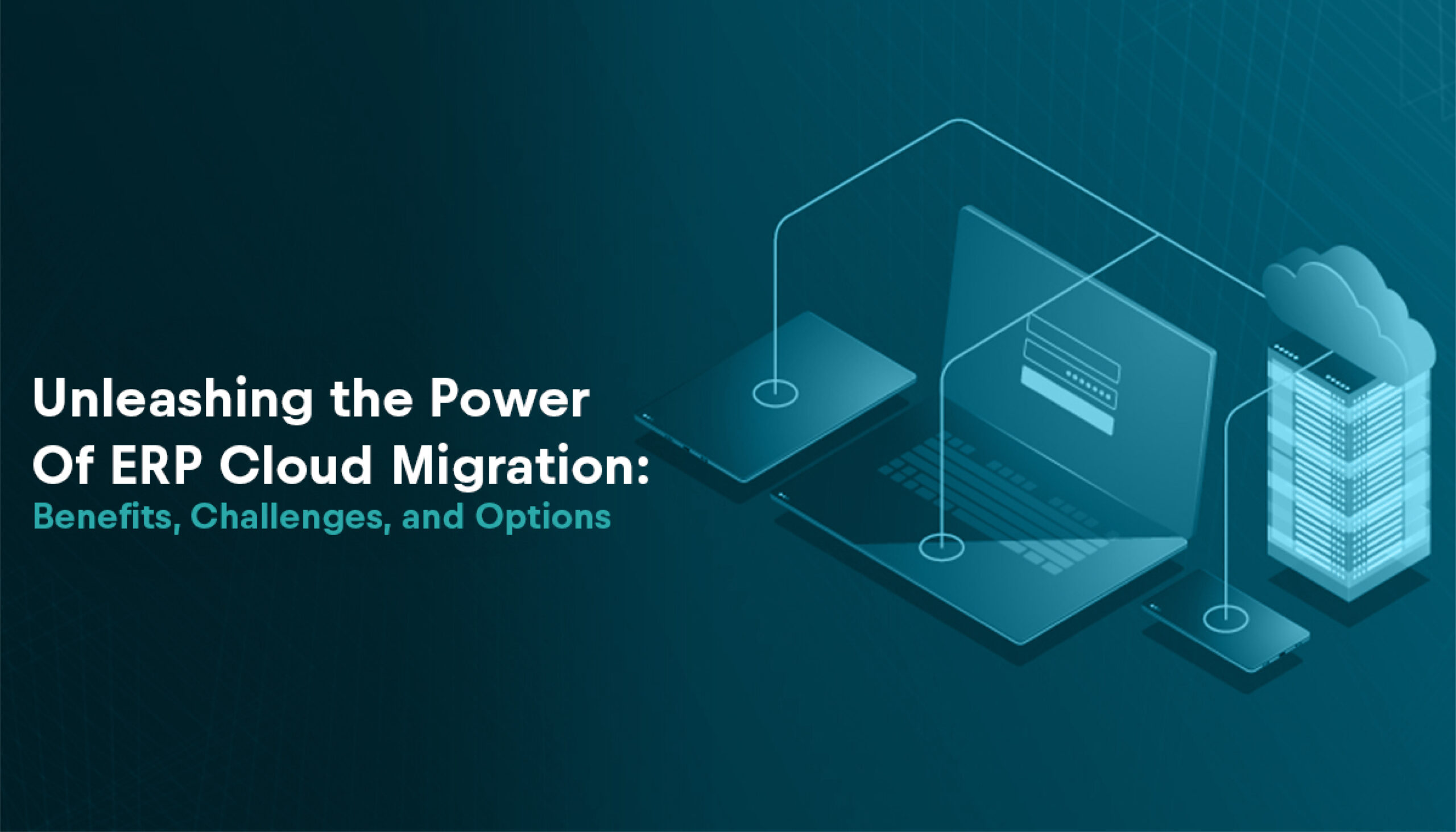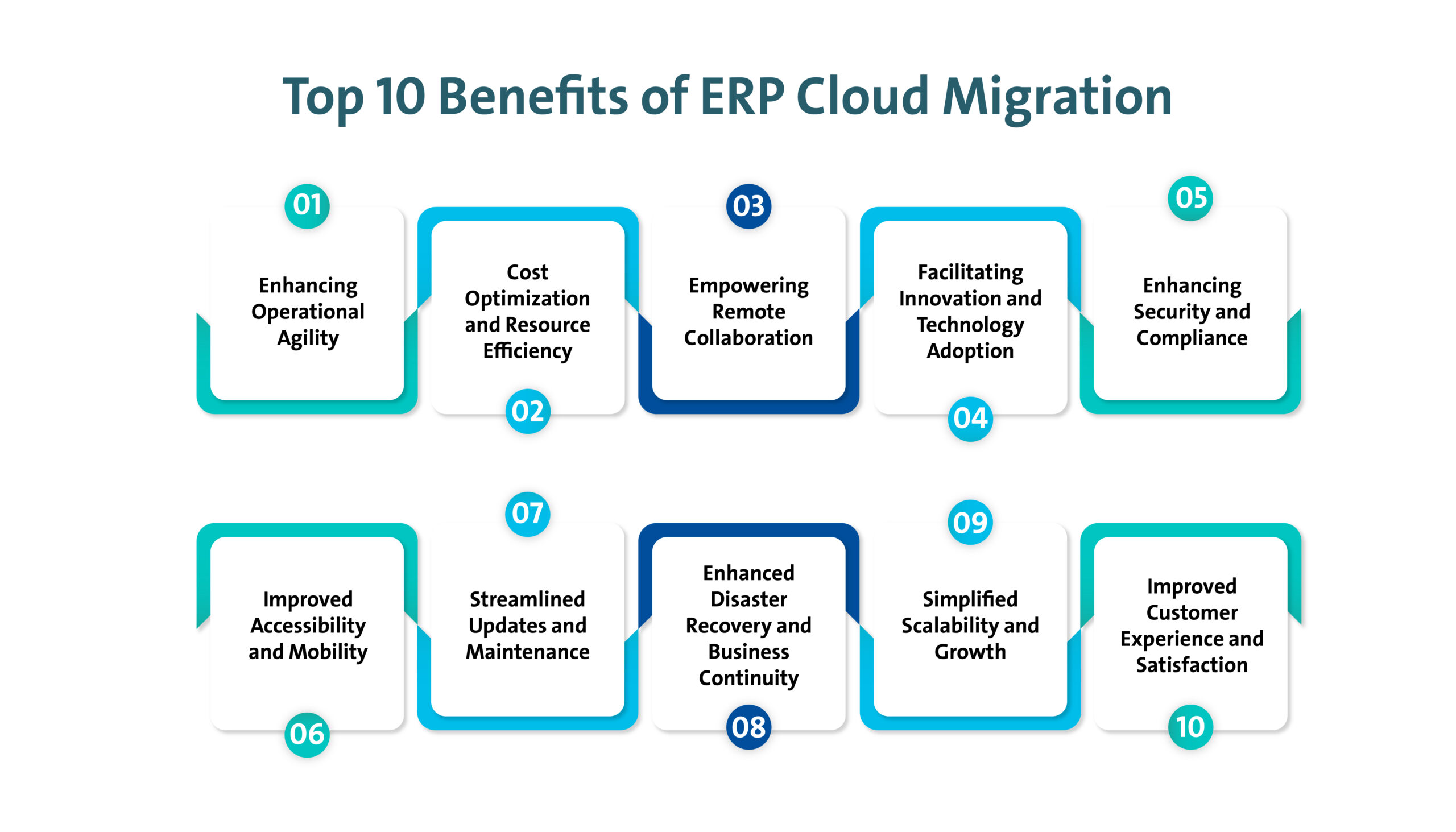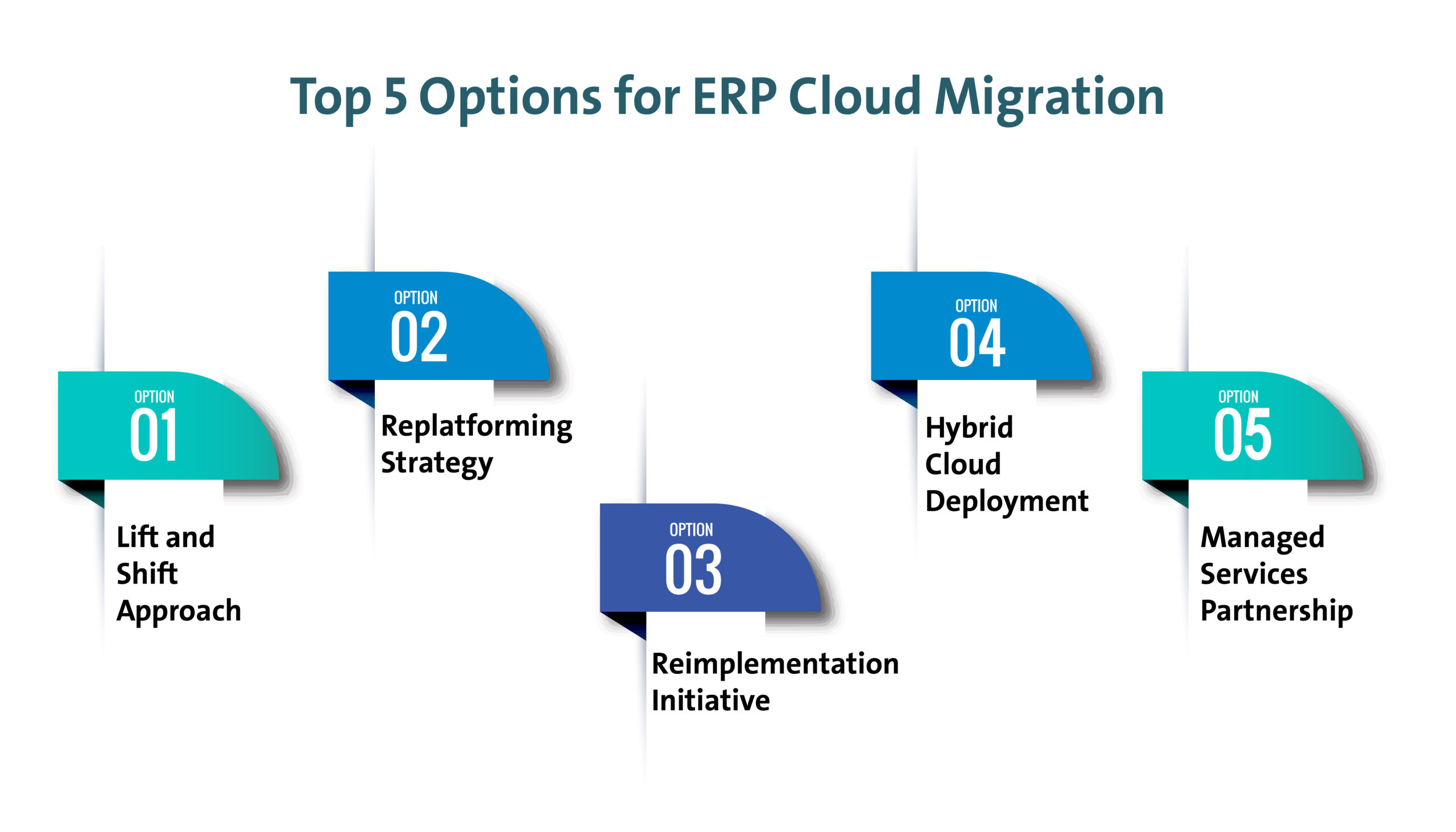
Unleashing the Power of ERP Cloud Migration: Benefits, Challenges, and Options

FoxERP
In the contemporary business landscape, Enterprise Resource Planning (ERP) systems play a pivotal role in driving operational efficiency and facilitating strategic decision-making. With the rapid evolution of cloud technology, organizations are increasingly exploring the option of migrating their ERP systems to the cloud to unlock a plethora of benefits and drive digital transformation. This comprehensive guide delves into the myriad benefits, challenges, and diverse options associated with ERP cloud migration, empowering organizations to make informed decisions and navigate their digital journey with confidence.
Top 10 Benefits of ERP Cloud Migration

1.Enhancing Operational Agility: Leveraging the flexibility and scalability of cloud-based ERP systems, organizations can dynamically adjust their resources and scale operations in response to evolving business needs, fostering agility and adaptability in the digital era.
2.Cost Optimization and Resource Efficiency: Cloud-based ERP solutions offer a subscription-based pricing model, eliminating the need for hefty upfront investments in hardware infrastructure and reducing operational costs associated with maintenance and upgrades, enabling organizations to optimize their financial resources and allocate budgets more effectively.
3.Empowering Remote Collaboration: Cloud-based ERP systems provide seamless accessibility to critical business data and applications from any location with internet connectivity, empowering employees to collaborate effectively and drive productivity, irrespective of geographical constraints or physical office locations.
4.Facilitating Innovation and Technology Adoption: By embracing cloud-based ERP solutions, organizations can harness the latest advancements in technology, such as artificial intelligence (AI), machine learning (ML), and predictive analytics, to drive innovation, gain valuable insights, and stay ahead of the competition in today’s rapidly evolving digital landscape.
5.Enhancing Security and Compliance: Cloud-based ERP vendors adhere to stringent security protocols and regulatory compliance standards, offering robust data encryption, regular security updates, and automated backups, ensuring the integrity and confidentiality of sensitive business data and safeguarding against potential security threats and breaches.
6.Improved Accessibility and Mobility: Enable anytime, anywhere access to critical business data and applications with cloud-based ERP systems, empowering employees to work remotely and collaborate effectively from various devices, enhancing productivity and flexibility in the modern workplace.
7.Streamlined Updates and Maintenance: Benefit from automatic updates and maintenance provided by cloud-based ERP vendors, eliminating the need for manual software updates and maintenance tasks. Stay up-to-date with the latest features and functionalities, ensuring optimal system performance and reliability without disrupting business operations.
8.Enhanced Disaster Recovery and Business Continuity: Leverage cloud-based ERP solutions’ robust disaster recovery capabilities, including regular data backups, failover redundancy, and data replication across multiple geographic locations. Ensure business continuity and minimize downtime in the event of system failures, natural disasters, or other unforeseen circumstances.
9.Simplified Scalability and Growth: Scale operations seamlessly and accommodate business growth with cloud-based ERP systems’ inherent scalability. Easily add new users, modules, or functionalities as your business expands, without the need for significant infrastructure investments or complex migration processes.
10.Improved Customer Experience and Satisfaction: Deliver superior customer service and satisfaction with cloud-based ERP systems’ ability to centralize customer data, streamline processes, and personalize interactions. Gain valuable insights into customer behavior and preferences, enabling targeted marketing campaigns and enhancing overall customer experience and loyalty.
Top 10 Challenges of ERP Cloud Migration
1.Navigating Data Security and Privacy Concerns: Migrating sensitive business data to the cloud raises concerns related to data security, privacy, and compliance with regulatory requirements, necessitating comprehensive risk assessments, encryption protocols, and data governance strategies to mitigate potential security vulnerabilities and ensure regulatory compliance.
2.Overcoming Integration Complexity: Integrating cloud-based ERP systems with existing on-premises applications, legacy systems, and third-party platforms poses challenges related to data interoperability, seamless data exchange, and workflow synchronization, requiring meticulous planning, robust integration frameworks, and interoperability standards to achieve seamless integration and data consistency across disparate systems.
3.Addressing Performance and Reliability Issues: Dependent on internet connectivity and cloud service provider infrastructure, cloud-based ERP systems may encounter performance degradation, latency issues, and service interruptions, impacting user experience and operational efficiency, necessitating comprehensive performance monitoring, optimization strategies, and service-level agreements (SLAs) to ensure optimal system performance and reliability.
4.Managing Organizational Change and User Adoption: ERP cloud migration entails organizational change management efforts to address resistance to change, promote user adoption, and align business processes with cloud-based workflows and functionalities, requiring effective communication, training programs, and stakeholder engagement strategies to facilitate a smooth transition and maximize user productivity and satisfaction.
5.Balancing Customization and Standardization: Cloud-based ERP solutions offer standardization and pre-configured functionalities, limiting customization options compared to on-premises solutions, posing challenges for organizations with unique or complex business requirements, necessitating a balanced approach to customization, standardization, and configuration to achieve optimal system flexibility, scalability, and alignment with business objectives.
6.Data Migration Complexity: The process of migrating large volumes of data from on-premises systems to the cloud can be complex and time-consuming, requiring careful planning, data mapping, and validation to ensure data integrity and minimize disruptions to business operations.
7.Vendor Lock-in Risks: Organizations may face vendor lock-in risks when migrating to a specific cloud-based ERP solution, limiting their ability to switch vendors or platforms in the future. This can result in dependency on a single vendor and potential challenges in negotiating contract terms and pricing.
8.Regulatory Compliance Challenges: Ensuring compliance with industry-specific regulations and data privacy laws when migrating sensitive business data to the cloud can be challenging. Organizations must navigate complex regulatory landscapes, implement appropriate data protection measures, and maintain compliance with evolving regulatory requirements.
9.Legacy System Dependencies: Organizations with legacy systems and outdated technology may encounter challenges when integrating these systems with cloud-based ERP solutions. Legacy system dependencies can result in compatibility issues, data format mismatches, and additional customization efforts to ensure seamless integration and data interoperability.
10.Data Governance and Ownership: Establishing clear data governance policies and defining data ownership responsibilities in a cloud-based ERP environment can be challenging. Organizations must address issues related to data access controls, data sharing agreements, and data stewardship to maintain data integrity, confidentiality, and compliance with internal policies and regulatory requirements.
Top 5 Options for ERP Cloud Migration

1.Lift and Shift Approach: Organizations adopt a lift and shift approach to migrate their existing ERP systems to the cloud without significant modifications, aiming for a quick and cost-effective migration while retaining core functionalities and minimizing disruption to business operations.
2.Replatforming Strategy: Organizations opt for a replatforming strategy to optimize their ERP systems for the cloud by making necessary adjustments and enhancements, such as performance tuning, database optimization, and application modernization, while retaining existing business logic and data structures, aiming to improve system performance, scalability, and cost efficiency.
3.Reimplementation Initiative: Organizations embark on a reimplementation initiative to overhaul their ERP systems from scratch, redesigning and rebuilding them to fully leverage cloud capabilities, modernize outdated processes, and adopt best practices, aiming to maximize the benefits of cloud technology and drive digital transformation across the organization.
4.Hybrid Cloud Deployment: Organizations embrace a hybrid cloud deployment model, combining on-premises and cloud-based ERP solutions to leverage the benefits of both environments, such as data sovereignty, regulatory compliance, and performance optimization, while maintaining flexibility, control, and customization options, aiming to achieve a balance between on-premises security and cloud-based scalability.
5.Managed Services Partnership: Organizations partner with managed service providers (MSPs) specializing in ERP cloud migration to facilitate the migration process, leveraging their expertise, resources, and best practices to ensure seamless migration, optimize system performance, and provide ongoing support and maintenance, aiming to minimize risks, accelerate time to value, and maximize return on investment (ROI) in cloud technology.
Conclusion:
Navigating the complex landscape of ERP cloud migration requires a comprehensive understanding of the benefits, challenges, and diverse options available to organizations seeking to leverage cloud technology to drive digital transformation and achieve strategic business objectives.
Recent Posts

FoxERP
Unleashing the Power of ERP Cloud Migration: Benefits, Challenges, and Options
In the contemporary business landscape, Enterprise Resource Planning (ERP) systems play a pivotal role in driving operational efficiency and facilitating strategic decision-making. With the rapid evolution of cloud technology, organizations are increasingly exploring the option of migrating their ERP systems to the cloud to unlock a plethora of benefits and drive digital transformation.

FoxERP
The ERP Revolution: Navigating Enterprise ERP System Challenges
Enterprise Resource Planning solutions can be a lifesaver for businesses. It enables you to automate all your day-to-day business processes in a centralized and streamlined platform. Today, most business organizations implement ERP solutions like FOX ERP to improve business operations, boost data security and data quality, automate workflows, and enhance customer service.

FoxERP
Unlocking Organizational Success by Embracing the Strategic Roadmap to ERP Implementation
Do you know? The global ERP software market is expected to reach a staggering $78.40 bn by 2026, growing at a CAGR of 10.2%. The global ERP software market is estimated to take over 40% of the market share by 2025.



